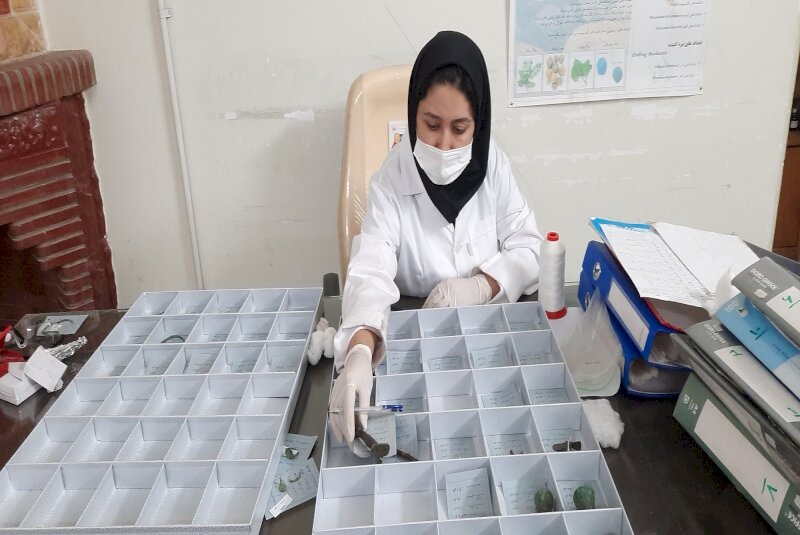Relics discovered from Iron Age cemetery restored, reorganized

TEHRAN – A team of Iranian cultural heritage experts has restored and reorganized tens of prehistorical metallic relics, which have been discovered from Mersin, an Iron Age cemetery in the north-central Semnan province.
“Due to a large number of these magnificent relics, a study on their [physical] status and corrosion was carried out first by the experts of the metal department at Semnan province’s Research Institute for the Protection and Restoration of Historical Monuments,” the provincial tourism Hamidreza Doustmohammadi said on Saturday.
The cemetery has also yielded relics from Medes, a branch of Indo-European people, who entered northeastern Iran as early as the 17th century BC.“Documentation and fault detection were among other measures taken on these objects. Moreover, they were packed in appropriate protective boxes to prevent possible damage to fragile or small metal relics,” the official explained.
The cemetery bears corps and relics from Medes, a branch of Indo-European people, who entered northeastern Iran probably as early as the 17th century BC and settled in the plateau land that came to be known as Media. And it was also used during the Achaemenid era (c. 550-330 BC), according to Iranian archaeologist Mehrdad Malekzadeh.
The cemetery is located along the southern slopes of the Alborz mountain range, east of the village of Talajim, near the Sefidrud River. The site was discovered during a rescue archaeological survey in the Fenisk Dam basin area. Based on surface materials, the cemetery was dated to the late Iron Age III and early Iron Age IV (c. 600–400 BC). To corroborate this dating, a radiocarbon date was obtained from human collagen from several graves.
As the Iron Age culture in Semnan province has not been well recognized, in August 2014 the Iranian Centre for Archaeological Research organized regular excavations at the site under the direction of Malekzadeh. Three trenches were excavated, covering a total of 235 square meters. Within trench 3 (10×5m) fifteen human graves were found, distributed in a regular pattern. Some burials were disturbed, but common features were easy to recognize, including the rectangular shape of the grave and the presence of a single body buried in each grave, being interred in an extended position on the back. Most graves had large stones delimiting the burial place and all contained grave goods except grave 4 that was, however, disturbed.
The graves can be divided into two general categories, being either covered by large flat slabs and wood (like graves 5 and 10) or covered only by soil. There is no uniform orientation of the body within the burial. Grave goods were variable and there were, among others, pottery vessels of different types, such as single-handled pitchers, bridge spout bowls, pots with spouts and handles, small jars, pedestal bowls, and twin joined small jars.
Furthermore, some pottery fragments and personal ornamentations have so far been discovered from the cemetery which bears over 2,000 tomb chambers.
AFM
